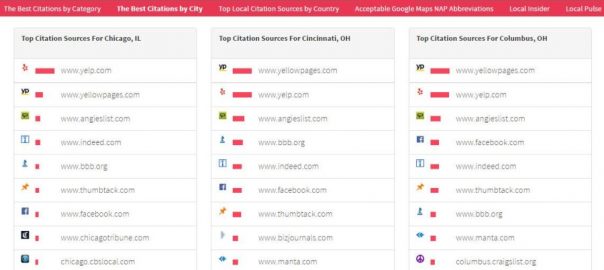First of all, let me apologize for the slightly misleading title. There is a world of difference in local SEO for franchises, e-commerce SEO or paid SEO for that matter.
From creating different types of landing pages to finding niche keywords that are relevant, a lot of franchise businesses (and their agencies) are neck deep in the search for the Holy Grail of franchise SEO.
Much has been written about it too. Nevertheless, all this research and numerous guides fall flat on their face because all businesses follow ‘me-too’ ways of SEO no matter what kind of business they are in.
For instance, if you are a franchise owner and have multiple places where you operate, then your SEO strategy changes drastically from giant e-tailers like Amazon and eBay that serve multiple locations.
Here are some ways to take your franchise SEO to multiple locations without upsetting the search engine gods.
It all starts with listings
Build your presence by listing your business in all local directories. You can either find these directories manually or use a tool like Whitespark to make your job easier.
Whitespark helps you find relevant local directories where you can list your local franchises. For instance, it will list your franchise in Pennsylvania in a directory for Pennsylvania and not Chicago. It is quite a powerful list building tool and boosts your visibility quickly and easily.

You should try it if you have multiple locations to save you hours of frustrating manual list building. Make a point that all your franchisees have consistent NAP i.e. name, address and phone listings to maintain consistency and get better rankings. For instance, if your business name is XYZ Cleaners, make sure you are listed as XYZ Cleaners Pennsylvania, XYZ Cleaners Chicago, etc. and not Philadelphia XYZ Cleaners.
Positionly has very good advice for listing NAP in directories. According to them,
the city’s NAP (Name, Address and Phone Number) should be clearly displayed on all city pages and that no other city’s NAP should be found in the directory or subdomain. If you want to show nearby locations, link to them or list them as images.
Also, make sure you have a Google+ Local page for each franchise. For instance, if I search for XYZ Cleaners Chicago, wouldn’t it make sense if I get Google+ listing of Chicago cleaners and not the corporate office. They wouldn’t do my laundry, would they?
In case you don’t have a Google+ Local profile yet, make one today. It is essential for any successful franchise.
Having a comprehensive Google+ page with all business details like address, how to reach, opening hours, and so on will ensure you are featured in local search results as well as on Google Maps. Ensure that each Google+ Page displays that city’s unique URL, not simply the root domain.
Moreover, create franchise-specific social media pages on all major platforms including Facebook, LinkedIn, Pinterest, and Instagram. Of course, the choice of social media platforms solely depends on the nature of your business.
Local website that’s not so local
There are two schools of thoughts. The first group believes that all local franchises should be put on one site as shown below.
www.examplewebsite.com
www.examplewebsite.com/locations
www.examplewebsite.com/locations/pennsylvania

This method helps you get the most link juice to your website. You can even use geolocation to guide your visitors to relevant location websites. However, if you are using the age-old practice of store locators and map markers, you are as good as kissing away that lead goodbye.
You can’t expect customers to find a franchise location manually when your competitors are already using automatic redirects to guide them to their relevant franchise.
Another school of thought is that each franchise should have an individual website or microsite. This might be an expensive affair as you would have to take care of each site and optimize it individually but then it also gets you great results while doing SEO for franchises. Furthermore, it makes easy for each franchise to do their PPC.
If you are planning to go this route and your budget doesn’t quite allow it, you need to find cost-effective options to build multiple websites.
There are plenty of choices like, for instance, SpaceCraft and Spaces that help you create multiple websites within budget.
These options help you create professional, uniform looking websites for all locations so you can maintain your brand identity across all franchise websites.
I personally prefer the latter because a single website can rank on a limited number of keywords or phrases but with many websites, you can use as many variations as you want until you find the SEO ranking elixir.
Add your business to GPS
From managing listings on Google Maps to GPS devices and navigation apps, make sure you get all your business locations added as POI databases. Advice Local can help you supercharge this with its GPS mapping tool.

It is quite a useful tool and gets all your businesses listed as Points of Interest on the primary devices including Garmin, TomTom, and Magellan. They also contact popular car manufacturers like Fiat, Toyota, and BMW to list your business in their built-in car navigations.
Adding your business to GPS ensures whether your customer is using his car, mobile or the internet, can find your business quickly.
However, it would be better if you manually cross-check all the listings even after using the tools as it is a common gripe among local businesses to find their business pointed to the wrong location.
Mark it on schema markup
If you have an individual website for your own franchise, you need to target and rank in local terms i.e. ‘XYZ Cleaners Chicago’ or ‘XYZ Cleaners Pennsylvania.
If this is the case, the first step is to give search engines as much local information as possible.
What you might have heard about Schema.org is it is a site that provides a range of schemas like HTML tags to help search engines recognize valuable information.
It would be worth it to add or mark your franchise location at Schema Place. Loading this code will give search engines a fair idea about your franchise location.
A franchisor with a range of branches should make this information available to all their partners.
You can mark address with branch code or store code i.e. http://XYZcleaners.com/Chicago/store-locator/etc/detail/0153 the code “0153” is a branch or store code for a particular outlet in a city. You must also mark Geo Coordinates of your franchise. You can mark maps too in Schema Maps.
Last but not the least, landing pages
A lot of rules for landing pages don’t apply to franchise business. Tim Gilboy of FranchiseHelp recommends using a ‘bunch of awesome services out there that make it very easy for you to start creating your own landing pages from scratch.’ He uses Unbounce to design and host landing pages for FranchiseHelp.
The rules for landing pages change quickly when it comes to the franchise. For instance, your landing page should display a local franchise’s address and a number more prominently.
The contact form should explicitly ask for visitors’ location. Also, a lot of people search for local services like healthcare, cafes, home services, etc. on the phone, so make sure your landing page is mobile friendly. One practice that Google uses when designing a landing page is the “ten-foot rule.” If a person cannot see the CTA from ten feet, then it is not prominent enough. So make sure your CTA is prominent.

Image Source: Author’s own
If the visitor lands on your page through affiliate referral or paid ads, make sure the message and location is consistent. For instance, don’t let a referral from Pennsylvania’s affiliate land on Chicago’s page. Set goals for all franchise outlets conversions so you can understand which landing page performs better and why.
Conclusion
However, most of these businesses are not successfully taking advantage of the revolution that is shaping online search behavior. If you want to take your franchise business to multiple locations, you need to follow this ten-step guide:
- Love your listings; build and run audit every few months to ensure healthy and accurate listings
- Strike the balance between local and corporate website
- Make your business easily searchable on maps and GPS devices
- Make unique landing pages for unique locations, don’t mess this on up. This is the biggest conversion killer
- Enable geolocation to ensure your visitors are directed to their local website
- Follow top SEO experts to stay updated
- Use SEO and listing tools to supercharge your listings
- Don’t underestimate the importance of your online reputation
- Use social media influence to boost franchise SEO
- Test, test and test some more.
Digital & Social Articles on Business 2 Community
(102)






